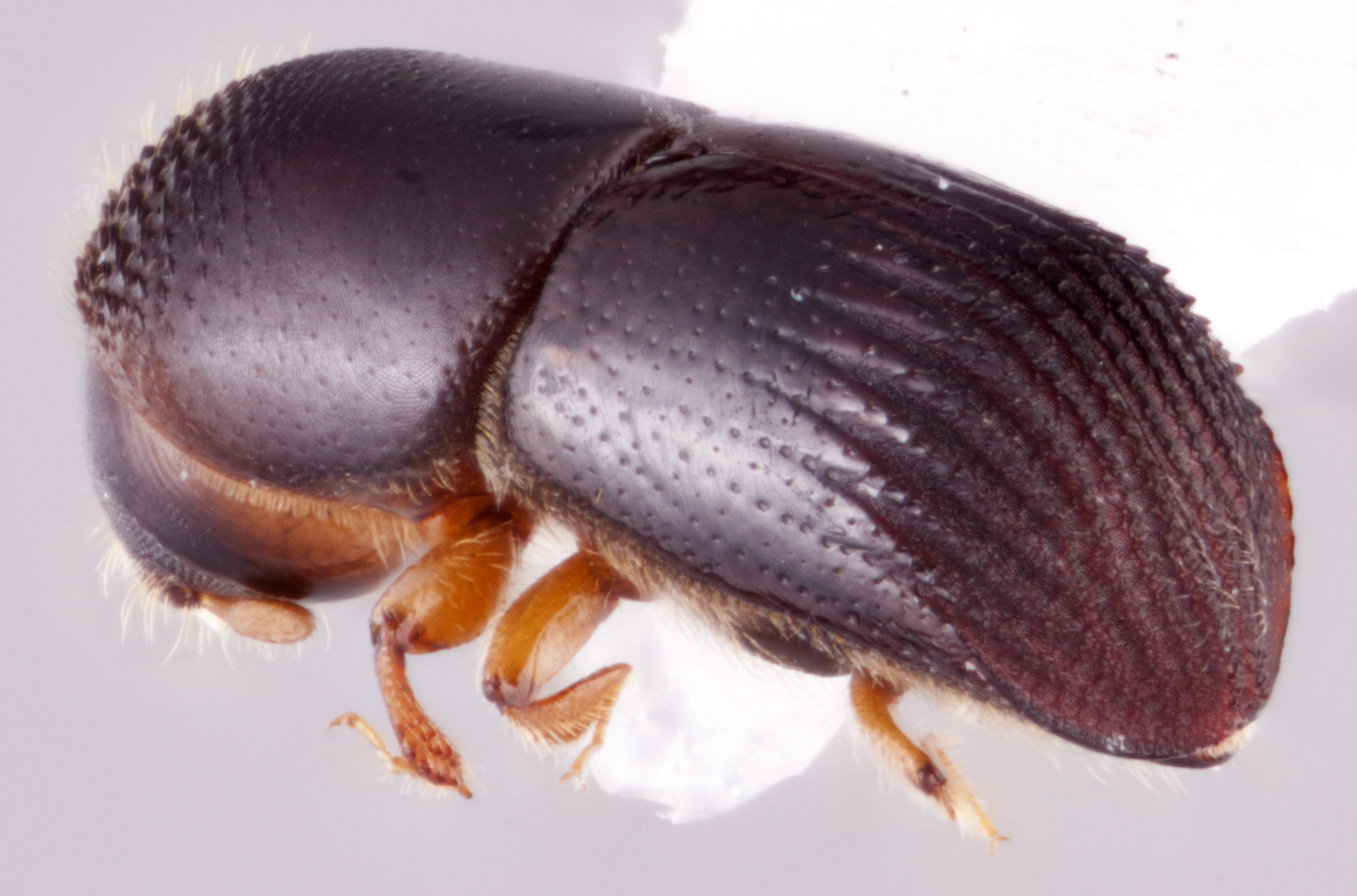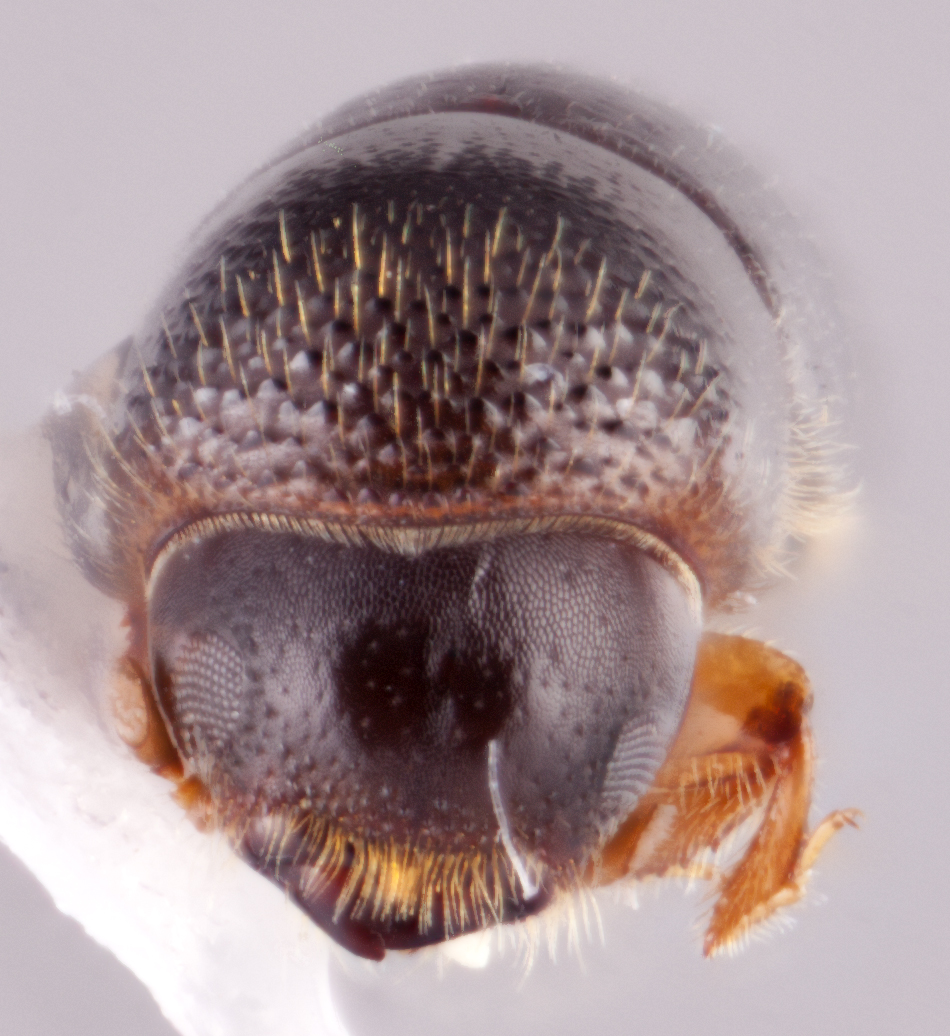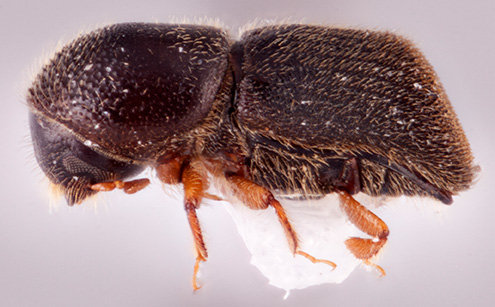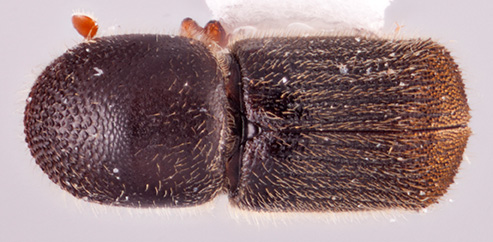Arixyleborus
|
Arixyleborus yakushimanus; R.K. Osborn |
|
Arixyleborus yakushimanus; R.K. Osborn |
|
Arixyleborus yakushimanus; R.K. Osborn |
|
Arixyleborus yakushimanus; R.K. Osborn |
|
Arixyleborus leprosulus; S.M. Smith |
|
Arixyleborus leprosulus; S.M. Smith |
|
Arixyleborus setosus; R.K. Osborn |
|
Arixyleborus setosus; R.K. Osborn |
Taxonomy
Arixyleborus Hopkins, 1915a: 59.
Synonyms
Xyleboricus Eggers, 1923: 212. Schedl, 1952d: 162.
Diagnosis
1.35−5.2 mm long, 2.0−3.5 times as long as wide. Arixyleborus can be distinguished by the elytraelytron:
the two sclerotized forewings of beetles that protect and cover the flight wings
with distinctive deep strial furrows and interstrial ridges, ridges either granulategranulate:
pertaining to a coarse, grainy surface texture
 or carinate. Arixyleborus can be further diagnosed by the obliquely truncateobliquely truncate:
or carinate. Arixyleborus can be further diagnosed by the obliquely truncateobliquely truncate:
nearly truncate but rounded not flat in lateral view
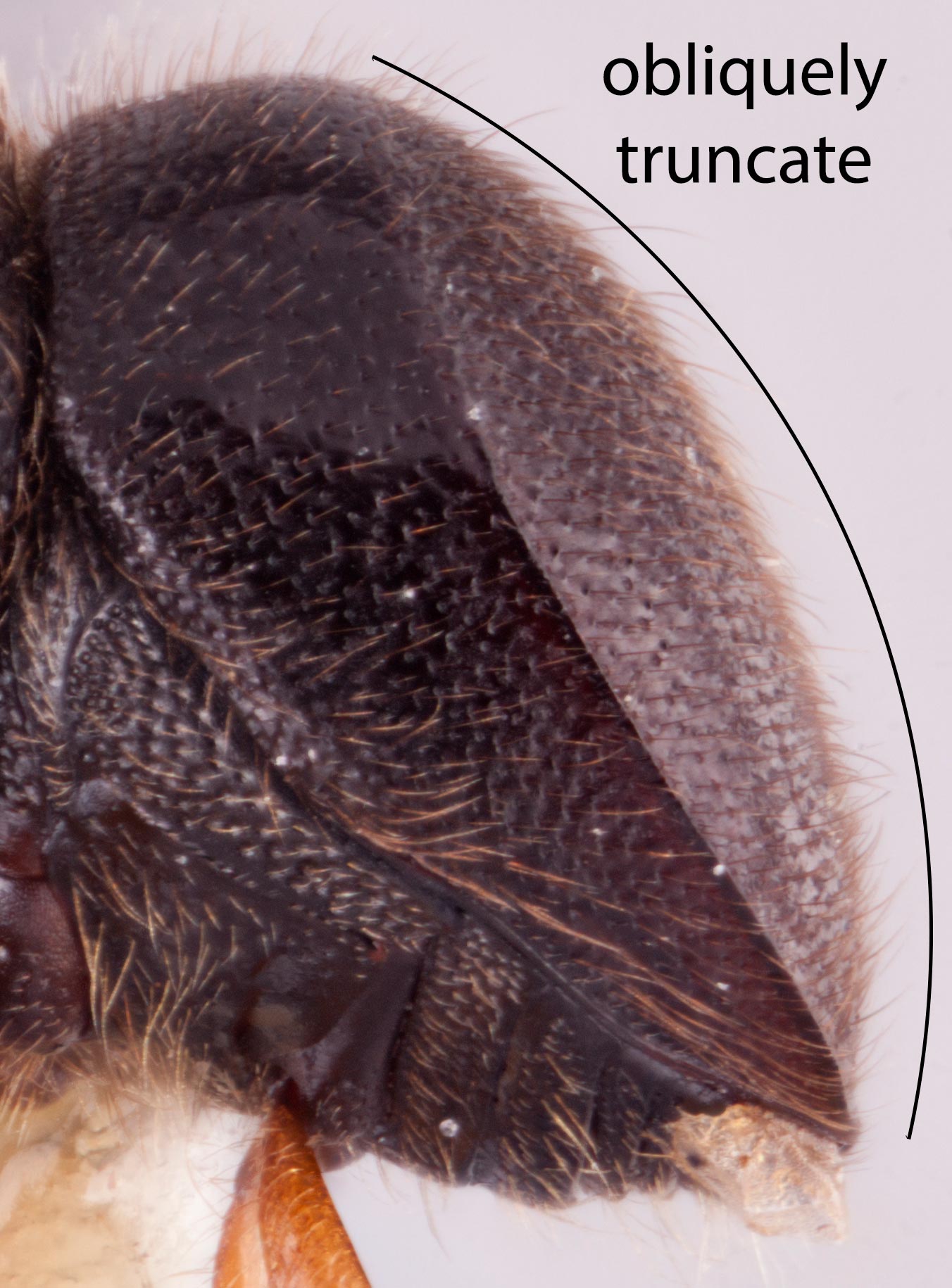 antennalantennal:
antennalantennal:
pertaining to the antennae
club with segment 1 almost covering the posteriorposterior:
toward the rear end; opposite of anterior
 face (type 2), clubclub:
face (type 2), clubclub:
the broadened, flattened end of antenna, in Xyleborini comprised of three segments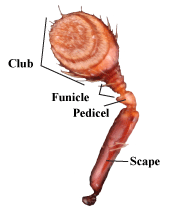 broader than tall or as tall as wide; protibiaprotibia:
broader than tall or as tall as wide; protibiaprotibia:
tibia of the first pair of legs
slender or evenly rounded, posteriorposterior:
toward the rear end; opposite of anterior
 face flat and unarmed or inflatedinflated:
face flat and unarmed or inflatedinflated:
blown up; distended
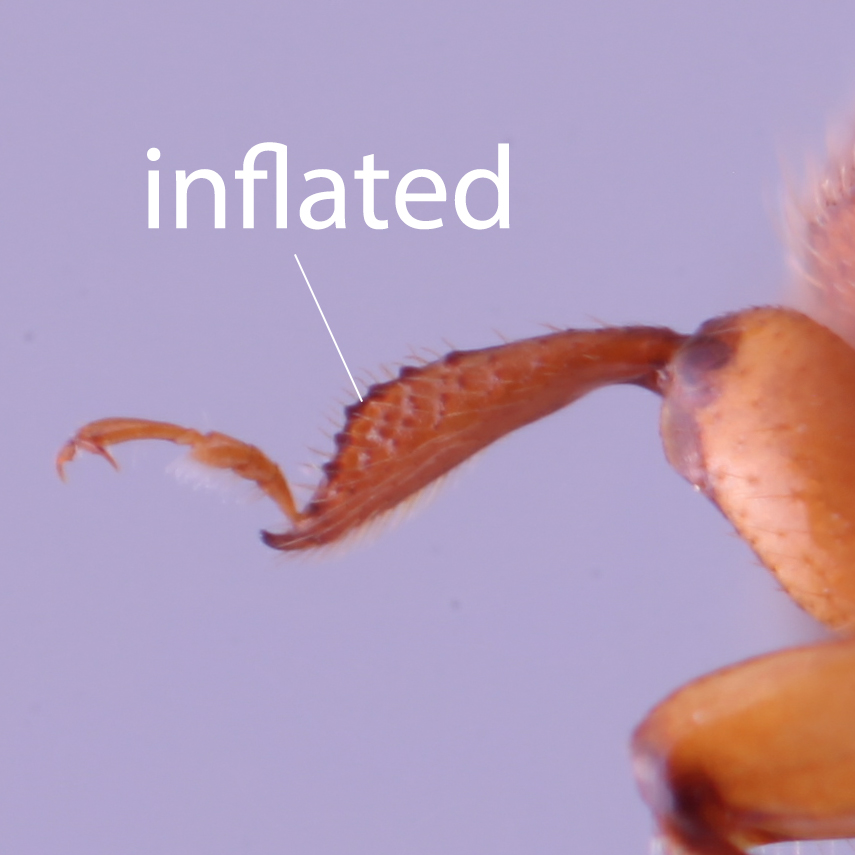 and granulategranulate:
and granulategranulate:
pertaining to a coarse, grainy surface texture
 ; scutellumscutellum:
; scutellumscutellum:
a shield-like sclerotized plate located at the midpoint of the elytral base
variable either flush with elytraelytron:
the two sclerotized forewings of beetles that protect and cover the flight wings
and flat, flush with elytraelytron:
the two sclerotized forewings of beetles that protect and cover the flight wings
and medially impressedimpressed:
a depression in a surface
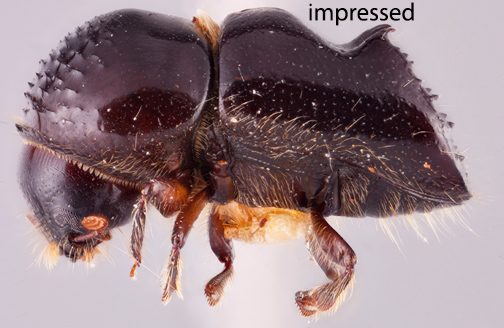 or flat and depressed below elytra; elytraelytron:
or flat and depressed below elytra; elytraelytron:
the two sclerotized forewings of beetles that protect and cover the flight wings
from dorsaldorsal:
of or relating to the upper surface; opposite of ventral
 view typically angulate, rarely rounded; mycangial tufts absent; and procoxae contiguous.
view typically angulate, rarely rounded; mycangial tufts absent; and procoxae contiguous.
Arixyleborus is similar to Stictodex with which it shares a broad antennalantennal:
pertaining to the antennae
club but which lacks the distinctive elytralelytral:
pertaining to the elytra
ridges and furrows.
May be confused with
Cnestus, Pseudowebbia, Stictodex, Truncaudum, and Webbia
Distribution
throughout tropical Asia and Oceania, one species in Africa
Gallery system
An unbranched radial or curved entrance tunnel, sometimes with a few branches. As the larvae develop, their feeding activity extends part of the main gallery into a single longitudinal brood chamber usually approximately rectangular in shape and the width of the main gallery (Browne 1961bBrowne 1961b:
Browne FG. 1961b. The biology of Malayan Scolytidae and Platypodidae. Malayan Forest Records 22: 1-255.).



